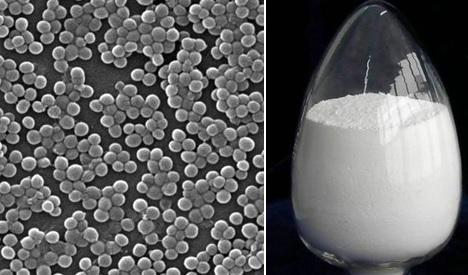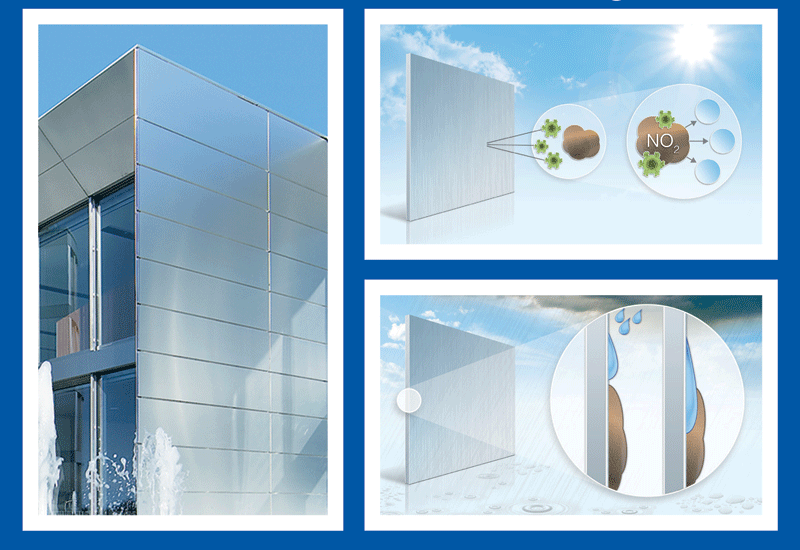Is TiOx harmful?
Titanium dioxide is a harmless substance, not biocidal and not subject to authorization. In general, the harmlessness of nanoparticles is under investigation, but no regulation or prohibition has yet been made on them. Strictly speaking, after application and drying, the TIOXtm coating is a solid colloidal dispersion system in the sense that it contains sub microscopic discontinuities. This means that TiO2 nanoparticles are embedded in a contiguous solid frame (film material), but the surface as a whole is not considered to be in the nano size range. In addition, the concentration of nanoparticles is so low that, during the expected wear, no significant amount is released from the surface to the environment.
 For this reason, in most applications, control tests can measure activity greater than 80% after one year. The product is not harmful according to SGS laboratory tests. Although the TIOXtm coating has an antimicrobial effect, it is not a biocidal product. For it to be effective, it requires continuous exposure compared to conventional disinfectants. While the latter eradicate the microbial layer formed by a single, harsh effect, TIOXtm creates a continuous, low intensity, “unpleasant” environment for microbes, thus inhibiting their reproduction. In everyday language, organisms do not like an environment enriched with titanium dioxide nanoparticles. As a result of the continuous, low-intensity effect, the TIOXtm coated surface remains microbially clean, but it also contributes to the degradation of the general “dirt”. By its mechanism of action, absorbed light forms reactive radicals that react with organic matter on their surface, making them less complex, easier to remove.
For this reason, in most applications, control tests can measure activity greater than 80% after one year. The product is not harmful according to SGS laboratory tests. Although the TIOXtm coating has an antimicrobial effect, it is not a biocidal product. For it to be effective, it requires continuous exposure compared to conventional disinfectants. While the latter eradicate the microbial layer formed by a single, harsh effect, TIOXtm creates a continuous, low intensity, “unpleasant” environment for microbes, thus inhibiting their reproduction. In everyday language, organisms do not like an environment enriched with titanium dioxide nanoparticles. As a result of the continuous, low-intensity effect, the TIOXtm coated surface remains microbially clean, but it also contributes to the degradation of the general “dirt”. By its mechanism of action, absorbed light forms reactive radicals that react with organic matter on their surface, making them less complex, easier to remove.
It is worth noting here: TIOXtm is not a panacea and does not make the need for general hygiene solutions unnecessary. Instead, it offers a complementary, continuous maintenance effect that can increase the interval between traditional disinfection methods and improves the time between them. TIOXtm can reduce up to 99% of bacteria settling on the surface.
Durability of tiox coating
During the test measurements, the TIOXtm coating proved to be stable. In real life applications, this is also the case. Even after one year, the developed surfaces showed more than 80% activity. The coating is proven to be durable under normal conditions of use, retains its integrity on heavily used floors, and the floor can be washed or wiped. On heavy-duty surfaces, as with all materials, it may wear, resulting in a reduction in the effect. For this reason, the effectiveness of the coating is periodically checked and, if necessary, renewed.
Where can TIOXtm can be used?

Perhaps it would be easier to answer the question of where not to use it. We recommend it wherever appropriate hygiene is important or at places used by many people making them more at risk of infection. Thus, on public transport, handrails, waiting rooms, and manufacturing units where there is a risk of microbial contamination. It is even recommended for places where the black fungus (Baudoinia compniacensis) is settling in factory buildings. Regardless of the quality of the treated surface, TIOXtm can be used wherever lighting is used.
Why choose TIOX?
TIOXtm, unlike most products on the market, offers a uniquely durable solution. However, we are most proud of the fact that artificial light sources have been able to achieve the desired antimicrobial effect, so no special light sources are needed. In fact, the latest version of our material works in almost complete darkness. As the product is not biocidal, it is not subject to authorization, or any safety procedures. After ordering our service, you can just feel good knowing that you took significant steps to reduce contaminations and infections.
We provide our product as a service, that is, to inspect and, if necessary, reapply the surface, thus guaranteeing the continued presence of antimicrobial activity.